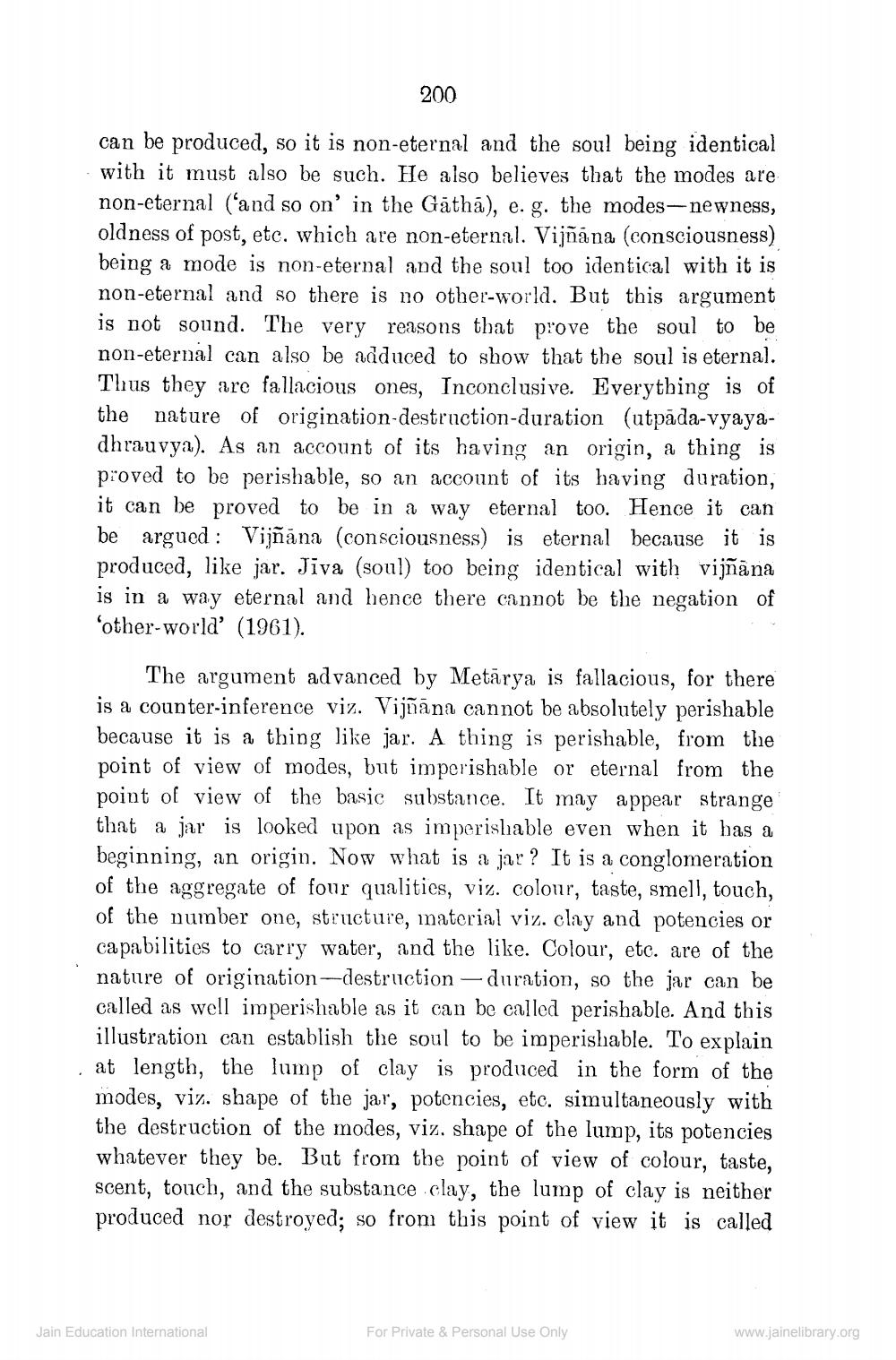________________
200
can be produced, so it is non-eternal and the soul being identical with it must also be such. He also believes that the modes are non-eternal and so on' in the Gathā), e.g. the modes-newness, oldness of post, etc. which are non-eternal. Vijñāna (consciousness) being a mode is non-eternal and the soul too identical with it is non-eternal and so there is no other-world. But this argument is not sound. The very reasons that prove the soul to be non-eternal can also be adduced to show that the soul is eternal. Thus they are fallacious ones, Inconclusive. Everything is of the nature of origination-destruction-duration (utpăda-vyayadhrauvya). As an account of its having an origin, a thing is proved to be perishable, so an account of its having duration, it can be proved to be in a way eternal too. Hence it can be argued : Vijñāna (consciousness) is eternal because it is produced, like jar. Jiva (soul) too being identical with vijnana is in a way eternal and hence there cannot be the negation of 'other-world' (1961).
The argument advanced by Metārya is fallacious, for there is a counter-inference viz. Vijñāna cannot be absolutely perishable because it is a thing like jar. A thing is perishable. from point of view of modes, but imperishable or eternal from the point of view of the basic substance. It may appear strange that a jar is looked upon as imperishable even when it has a beginning, an origin. Now what is a jar ? It is a conglomeration of the aggregate of four qualities, viz. colour, taste, smell, touch, of the number one, structure, material viz. clay and potencies or capabilities to carry water, and the like. Colour, etc. are of the nature of origination-destruction - duration, so the jar can be called as well imperishable as it can be called perishable. And this illustration can establish the soul to be imperishable. To explain at length, the lump of clay is produced in the form of the modes, viz. shape of the jar, potencies, etc. simultaneously with the destruction of the modes, viz. shape of the lump, its potencies whatever they be. But from the point of view of colour, taste, scent, touch, and the substance clay, the lump of clay is neither produced nor destroyed; so from this point of view it is called
Jain Education International
For Private & Personal Use Only
www.jainelibrary.org




